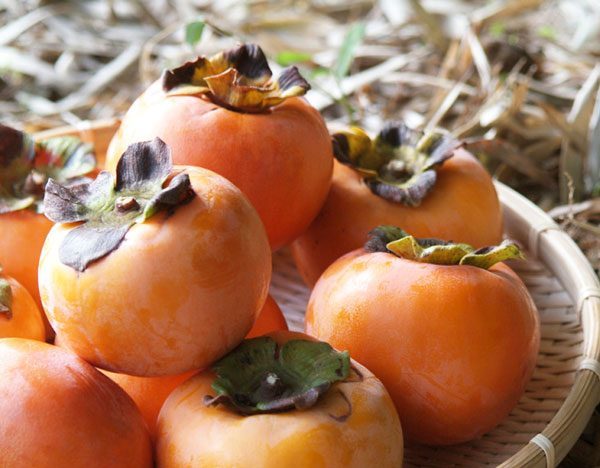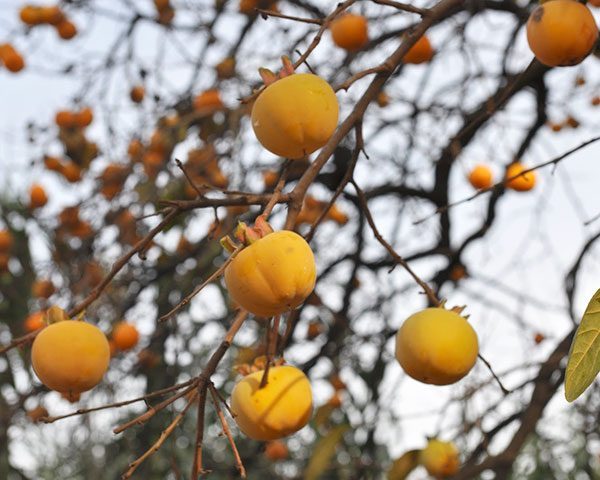
Hachiyas persimmons
They are oblong, heart-shaped like with a pointed end and are very tart if you taste them un-ripe. If you let them ripen gradually, they become soft and very mushy just like an overripe tomato. The ripe flesh is gelatinous and delicately sweet. People that are not aware always eat persimmons before they’re completely ripe: it’s just hard to believe you have to let them ripe this scary way to make them actually taste good! But this lovely fruit worths the wait, as we all learn with practice!
Fuyu persimmons
This variety of persimmons is smaller, shaped like a tomato, and firmer. Unlike the Hachiya, its flesh is crunchy and sweet with a reminiscent cinnamon scent. You can eat it like an apple and take a bite or slice it into wedges. They is no specific need to peel Fuyu persimmons; it’s up to you.

Buying and storing persimmons
Pull gently on its stem to know if the persimmon is ripe and ready for consumption. It should pop off. Color should be deep and flesh should be as softer as possible for the Hachiya and firm like an apple for the Fuyu. You can buy at any stage of ripening; just let it ripen at room temperature. It can take a long time (few weeks) so be patient. Once ripe, store persimmons in the refrigerator.
How to prepare persimmons
You can eat Hachiyas with your hands but it can turn very messy because of juice and gelatinous flesh. To avoid spilling juice everywhere, cut off the top and scoop out the fruit flesh with a spoon. The skin of the fruit is normally edible, but it can retain a tannic taste that you may not like. For a Fuyu persimmon,remove the stem and bite in or slice it like you woud do for an apple.
There is not really a substitue for Hachiyas persimmons as they taste quite unique. Fuyu are close to apple and un-ripe pears in term of texture but taste is also very different.
Photo: terroirsdechefs.com

